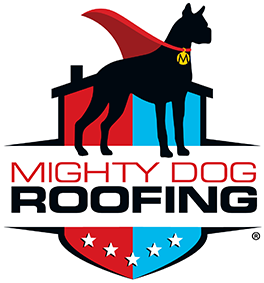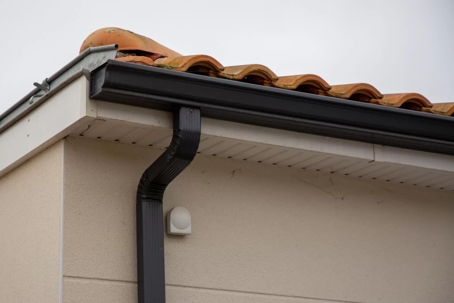What is Drip Edge? Understanding Its Role and Types
Guarding Your Roof’s Edge: Unveiling the Purpose of a Drip Edge
Meet the unsung hero of any roofing system: the drip edge! A drip edge directs water away from the roof and into the rain gutter. It’s made of metal to withstand the brunt of inclement weather.
But is a drip edge required? And what kinds of drip edges are available? Let’s discover the answers to these questions together.
What Is Roofing Drip Edge?
A roofing drip edge is a type of metal flashing installed at the roof edge to keep water away from the fascia board and prevent water from seeping under the shingles and other roofing materials. Without a drip edge, water can get behind the gutters and damage the fascia and roof deck. Referred to by several different names, a drip edge protects a home against pests, as well.
What Is The Purpose Of A Roof Drip Edge?
The purpose of a roof drip edge is to direct water away from the fascia and protect roofing material from wind-driven rain. Due to surface tension and cohesion, water droplets can join together and work their way under the shingles. Without a roof drip edge, the water may run down the fascia or get under the shingles and cause a roof leak.
In windy conditions, the wind may blow water droplets upward and onto the fascia. Gravity will limit how far the water can climb, so roofers must install a drip edge with at least a two-inch lower flange. A broken drip edge must be replaced to maintain protection for the roofing materials.
Types Of Drip Edges
Manufacturers make drip edges in various shapes from several different types of materials. Some drips edges go on the roof, while others protect doors and windows. Let’s look at some of the main shapes and materials of drip edge flashing.
Types Of Drip Edge Profiles
A roofing professional will usually install roof drip edges with one of three different profiles: Type C, Type D, and Type F. Each type of drip edge profile has its advantages and drawbacks.
- Type C remains the most affordable, simplest type of roof drip edge. Sometimes called an “L-style” drip edge, Type C is bent at a 90-degree angle.
- Type D does a better job of directing water into the gutter when installed correctly. Shaped like a “T,” this drip edge is sometimes called “T-style,” “drip metal,” or “D metal.”
- Type F has a longer leading edge than the other drip edges, which makes it easier for a roofing contractor to install on a rake edge or over existing roof shingles. Some people call it “F-style” or “gutter apron.”
Types Of Drip Edge Materials
A roof drip edge should be made of metal to withstand the elements. Plastic, fiberglass, and vinyl drip edges typically protect windows and doors. Most roof drip edges The most common metals used for a drip edge include:
- Galvanized steel — A corrosion-resistant solution
- Aluminum — The standard drip edge
- Copper — An alternative solution that turns green with oxidation
What Building Code Requires Roof Drip Edges?
Section R905.2.8.5 of the 2018 International Residential Code (IRC) states that a drip edge shall be provided at the eaves and rake edges of shingle roofs. The section continues by saying that adjacent segments of the drip edge shall overlap by no less than two inches. The vertical flange of the drip edge shall extend not less than a quarter-inch below the roof decking, and extend up the slope of the roof deck not less than two inches.
Most jurisdictions in the United States have adopted the IRC, requiring residents to install drip edge flashing on the edges of shingle roofs. These local building codes require a drip edge to pass a home inspection.
When Is A Drip Edge Not Required?
A drip edge is not required in a few different situations. For example, most building codes do not require a drip edge on homes with prebent aluminum fascia. Some forms of rake molding take the place of drip edges, as well. Finally, a home does need a drip edge installed in places where the local building codes do not require it.
3 Signs A Drip Edge Needs A Replacement
When properly installed, a drip edge keeps a roof’s deck dry. However, when broken or improperly installed, it needs a quick replacement to avoid significant water damage. Find some of the most common signs that a drip edge needs a replacement below.
1. Water Leaking Behind The Gutter
Water running down the side of the house is a sign that it’s time for a replacement. Over time, the water will stain or even erode the side of a building. Other possible causes for the leak include clogged rain gutters and downspouts.
2. Rotten Fascia
If the fascia is rotten, peeling, soft, or moldy, a drip edge replacement might be in order. Any discoloration of the fascia means a homeowner should investigate further. Holes in the fascia should prompt an immediate call to a roofing company.
3. Ceiling Water Damage
Water damage on the ceiling could indicate several different roofing problems. In some cases, a perforated nail flange could be the cause behind the roof leak.
FAQ
Are Drip Edges Necessary?
Drip edges are necessary because most building codes across North America require them to protect homes from damage. Drip edges prevent water from seeping beneath the shingles and damaging other parts of the house. Homes built without drip edges should have them put in if the jurisdiction in which they sit requires drip edge installation.
What Are The 3 Types Of Drip Edges?
The three types of drip edges are Type C, Type D, and Type F. The Asphalt Roofing Manufacturers Association suggests Type D because it looks like a “T” and has a lower flange at the bottom. However, each roofing contractor has their own drip edge preference.
Can A Drip Edge Be Installed After Shingles?
A drip edge can be installed at any time, including after shingles. The most common time to install drip edges is while installing the shingles. The materials needed include a ladder, flat pry bar, hammer, galvanized roofing nails, tin snips, and eave stripping.
What Is The Difference Between Flashing And Drip Edge?
The difference between roof flashing and drip edge is that flashing goes near chimneys, vents, sidewalls, dormers, and roof valleys, while a drip edge is a type of metal flashing installed on a roof’s edge to divert water away from the fascia and soffit.
Your Trusted Local Roofers | Mighty Dog Roofing
Keep water away from the edge of the roof with a drip edge. Now that you know what a drip edge is, you can check yours to see if it needs replacing. A damaged drip edge can not protect the edges of the roof from water infiltration.
We proudly offer residential roofing services, including free roof inspection services. We'll be glad to inspect your drip edge, among other roof components.
Call Mighty Dog Roofing at (844) 942-4081 to schedule a free consultation and see if a drip edge replacement is right for you. You can also contact your local Mighty Dog Roofing.


